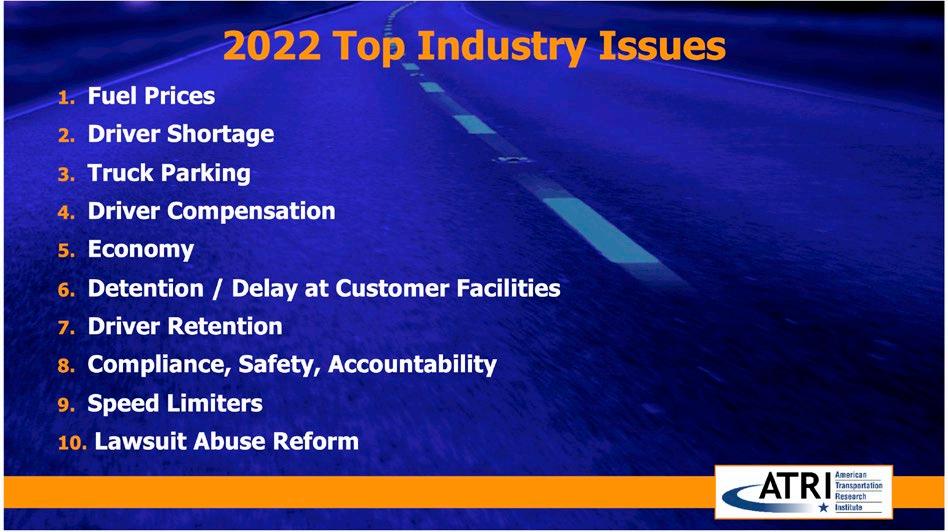
3 minute read
YOUR PROVIDER COLLABORATION SUCCESS ELEVATING
Food companies with advanced procurement functions in the areas of manufacturing, warehousing, distribution, and transportation know that there are limits to the value they can generate by focusing heavily on price. Smart shippers are keenly aware that when they and their provider partners are willing to openly collaborate, they often can find significant new sources of value that are of mutual benefit to all parties.
Successful supply chain managers and their providers oftentimes take an integrated approach to supplychain optimization - redesigning their processes together to reduce waste and redundant effort, or jointly purchasing raw materials. Sometimes they even collaborate in forecasting, planning, and capacity management to ultimately improve service levels, lower operating costs, mitigate risks, and strengthen the combined supply chain.
Primary Opportunities for Successful Collaboration
There are five major dimensions that underpin successful collaboration programs in procurement and supply chain, according to the McKinsey/Michigan State University Supplier Collaboration Index (SCI). The SCI is a survey- and interview-based benchmarking tool that assesses supplier-collaboration programs over these areas:
1. Strategic alignment: Involving the company’s overall strategic goals and objectives, classification of activities as strategic, and scope of collaboration initiatives
2. Cross-functional engagement: Breadth of relationship across the organization, quality and outcomes of engagement across functions, and the ability to navigate across respective organizations
3. Organizational governance: Incentive structure for sustainable collaboration, type and frequency for mutual feedback, and agreed-upon metrics to measure performance and track progress
4. Communication and trust: mutual trust, type and timeliness of information, and tools and supporting mechanisms
5. Value creation and sharing: Fair value sharing between supplier and manufacturer, adequate room for healthy financial health, and rewards for positive performance on collaboration initiatives.
Barriers to Meaningful Collaboration
Unfortunately, several factors can prevent successful collaboration from happening. Some supply chain initiatives may need a significant amount of time and effort before they generate value – resulting in food companies that prioritize only simpler, faster initiatives that may have lower ROI. Meaningful collaboration can require a significant shift in corporate culture and a change in mindsets among buyers and suppliers who may be more accustomed to transactional or sometimes even adversarial relationships. Most collaborative efforts require intensive, cross-functional involvement from both sides and a significant shift to the more traditional working methods at many companies. This shift from a “cost-based” mindset to a “valuebased” way of thinking requires a paradigm shift that is often difficult to create.
Many food shippers and their providers have experienced barriers to collaboration success in three areas:
Technology. While rapidly improving, the platforms and technologies used to exchange information between supply chain managers tend to be somewhat unsophisticated. For example, in the 2021 MHI Annual Industry Report, 17% of respondents said they use AI already, and another 45% predicted they’ll use it in five years. The survey of more than 1,000 supply chain professionals worldwide also found that 25% plan to make investments in AI products in the next three years.
Operations. Participants have not yet developed standards for the exchange of more complex data, from the carbon footprint of parts to the real-time location of products as they move through logistics networks.
Trust. Trust goes both ways in ensuring the integrity of any supply chain. Suppliers need their customers to trust that they will deliver their goods on time, to an agreed price. Equally, buyers need to treat their suppliers with respect by doing all they can to complete payments in line with agreed terms.
8 Steps TO SUCCESSFUL COLLABORATION
Excelling at supplier collaboration requires a more active and engaged working relationship with suppliers. It also calls for a change in mindset, encouraging both buyers and suppliers to commit to the long-term pursuit of value from their collaborative relationships. Follow these eight steps to place your collaboration efforts on the right track.
1. Start by identifying those suppliers that offer unique joint opportunities to create and retain significant value.
2. Align strategically with these partners to define joint objectives and develop a compelling business case for both parties.
3. Adopt a methodical and structured approach to define the scope, pace and targets for joint projects, including a clear methodology on how to measure value creation.
4. Define simple, clear value-sharing mechanisms, and align incentives of the cross-functional team accordingly.
5. Invest in allocating the appropriate resources and building the required infrastructure to support the program.
6. Create a governance model focused on performance, implementation tracking, and hardwiring supplier collaboration into core operational processes.
7. Foster a culture founded in proactive communication, transparency, consistency, and knowledge sharing, to strengthen long-term partnerships.
8. Invest in building world-class organizational capabilities to ensure sustainability over time.
For any organization seeking to improve the performance of its procurement practices, supplier collaboration can no longer be considered a nice-to-have. As companies reach the limits of conventional purchasing practices, further progress will require a new approach based on close relationships, cross-functional engagement, and the shared pursuit of new value.










